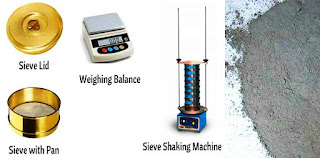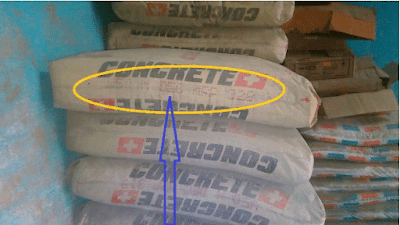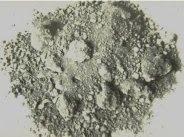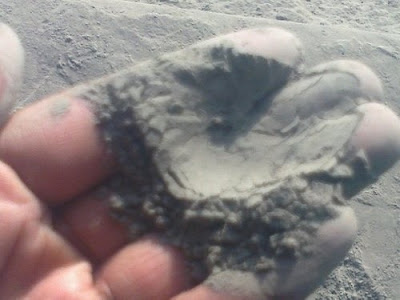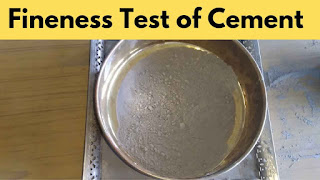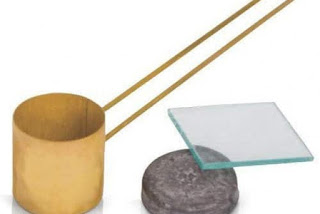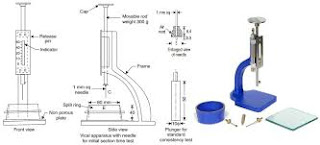CBR টেস্টের মাধ্যমে মূলত মাটির shear strength সমন্ধে ধারণা পাওয়া যায়। এটা মূলত ল্যাবরেটরী টেস্ট তবে অনেক সময় সাইটেও এই টেষ্ট করা যায় এবং এর রেজাল্ট থেকে সহজেই রাস্তার বিভিন্ন লেয়ারের প্রয়োজনীয় পুরুত্ব নির্ণয় করা যায়।
এই টেস্টের সবচেয়ে বড় সুবিধা হচ্ছে এই টেস্ট গোটা বিশ্বজুড়ে ব্যাপকভাবে ব্যবহৃত হয়, ফলে টেস্ট থেকে প্রাপ্ত রেজাল্ট সহজে বুঝার জন্য অনেক গাইডলাইন সহজেই পাওয়া যায়।
যন্ত্রপাতিঃ
১) সিবিআর লোডিং মেশিনঃ এটা কম্প্রেশন মেশিন, যা ৪৪.৫ কিলোনিউটন লোড ১.২৭ মিলিমিটার প্রতিমিনিটে প্রয়োগ করতে পারে।
২) প্রোভিং রিং যা প্রযুক্ত লোড পরিমাপে সমর্।
৩) পেনিট্রেশন পিস্টন
৪) পেনিট্রেশন পরিমাপের জন্য ডায়াল গজ
৫) মোল্ডঃ সিলিন্ডার সেইপের যার ভেতরের ডায়ামিটার হবে ১৫২.২+/- ০.৬৬ মিলি. ও উচ্চতা হবে ১৭৭.৮ +/- ০.৬৬ মিলিমিটার।
৬) স্পেসার ডিস্কঃ মেটালের তৈরি গোলাকার ডিস্ক যার ডায়ামিটার ১৫০.৮ +/- ০.৮ মিলিমিটার ও উচ্চতা ৬১.৪ +/-০.১ মিলিমিটার।
৭) র্যামারঃ ভর ২.৫ কেজি (৫.৫ পাউন্ড) ও আঘাত করার ফেস হবে ৫০.৮ মিলিমিটার ডায়ামিটারের।
৮) এক্সপানসন পরিমাপের জন্য প্রয়োজনীয় যন্ত্রপাতি
৯) সারচার্জ ভর
১০) ট্যাঙ্কঃ স্যাম্পলের ২৫ মিলিমিটার উপর পর্যন্ত পানির লেভেল মেইনটেইন করার মত ট্যাঙ্ক
১১) ব্যালান্স
১২) ওভেন
১৩) সীভঃ ১৯ মিলিমিটার ও ৪ নং
স্যাম্পলঃ
৩৫ কেজি স্যাম্পল AASHTO (Method-C) অনুযায়ী নিন্মলিখিত ভাবে তৈরি করতে হবেঃ
- যদি ফিল্ড থেকে সংগৃহীত স্যাম্পল ভেজা হয় তবে তা ওভেনে শুকিয়ে নিতে হবে ( তবে লক্ষ্য রাখতে হবে তাপমাত্রা যেন ৬০ ডিগ্রি অতিক্রম না করে)
-ম্যাটেরিয়াল যদি ১৯ মিলি. সীভ দিয়ে সবগুলোই পাস করে তবে সেগুলোই কাজে লাগবে আর যদি কিছু সংখ্যক ম্যাটেরিয়াল ১৯ মিলি. সীভের উপরে থেকে যায়,তাহলে সে পরিমান ম্যাটেরিয়াল যা ১৯ মিলিমিটারে পাস করে কিন্তু ৪ নং এর উপরে থাকে এমন ম্যাটেরিয়াল দ্বারা রিপ্লেস করতে হবে।
- ১১ কেজির মত স্যাম্পল MDD/ OMC জন্য আলাদা করতে হবে এবং বাকীগুলো ৩ ভাগে ভাগ করতে হবে।
নমুনা প্রস্তুতিঃ
১) নরমালি ৩ টি কম্পাকটেড নমুনা প্রস্তুত করতে হবে, যেন তাদের কম্পাকটেড ডেনসিটি MDD'র ৯৫-১০০% হয়।
* OMC ও MDD নির্ণয়ের জন্য স্ট্যান্ডার্ড প্রক্টোর বা মডিফাইড প্রক্টোর কম্পাকশন মেথড ব্যবহার করা যায়।
* সাধারণত নমুনা ৩ টি প্রস্তুতির জন্য প্রতি লেয়ারে ১০, ৩০ ও ৬৫ ব্লো এর প্রয়োজন হয়।
২) মোল্ডের ক্লাম্পকে বেস প্লেটের সাথে আটকিয়ে এর ওজন নেয়া হয়। এরপর একটি স্পেসার ডিস্ক মোল্ডে লাগিয়ে তার উপরে একটি ফিল্টার পেপার যোগ করা হয়।
৩) এবার পূর্বের আলাদাকৃত ৩ টি স্যাম্পলে Optimum moisture content obtain করার জন্য নির্দিষ্ট পরিমান পানি মেশানো হয়।
৪) এরপর মোল্ডে পানি মেশানো স্যাম্পল নিয়ে কম্পাক করা হয় এবং মোল্ডে এর উচ্চতা ১২৭ মিলিমিটার করা হয়। স্ট্যান্ডার্ড টেস্টের জন্য ০৩ লেয়ারে ও মডিফাইড টেস্টের জন্য ০৫ লেয়ারে কম্পাক করা হয়।
*কম্পাকশনের প্রথমে ও শেষে স্যাম্পলের ময়েশ্চার কনটেন্ট নির্ণয় করতে হবে।
৫) এবার ক্লাম্প খুলে মোল্ডকে আলাদা করে এর সারফেস সমান করে ট্রিম করে নিয়ে তার ওজন নির্ণয় করতে হবে।
সোকিং ( soak CBR নির্ণয়ের ক্ষেত্র):
১) এক্ষেত্রে নমুনার উপর annular load দিয়ে পানিতে ডুবিয়ে রাখতে হবে ৯৬ ঘন্টা। এসময় সোকিং ট্যাঙ্কে পানির লেভেল
এমনভাবে রাখতে হবে যেন তা নমুনার ২৫ মিলি উপর পর্যন্ত থাকে।
২) ৯৬ ঘন্টা পর soak specimen এর ফাইনাল ডায়াল রিডিং নিয়ে swell এর পার্সেন্টেজ নির্ণয় করতে হবে নিন্মলিখিত ভাবেঃ
swell(%)= [(change in dial reading)÷( depth of compacted specimen)] ×100
পেনিট্রেশন টেস্টঃ
১) এই ধাপে নমুনার উপরে সারচার্জ দিতে হবে। এই সারচার্জের পরিমাপ হবে সোকিংয়ের সময় দেয়া সারচার্জের সমান।
২) ৪.৫৪ কেজি লোড দিয়ে পেনিট্রেশন পিস্টনকে সেট করে পেনিট্রেশন ডায়াল ইন্ডিকেটর ও লোড ইন্ডিকেটরকে জিরো করে নিতে হবে।
৩) এরপর পেনিট্রেশন পিস্টনে এমন ভাবে লোড দিতে হবে যেন, পেনিট্রেশন রেট হয় ১.২৭ মিলিমিটার প্রতি মিনিটে। এরপর ০.৬৪ মিলি., ১.২৭ মিলি., ১.৯১ মিলি., ২.৫৪ মিলি., ৩.১৮ মিলি., ৩.৮১ মিলি., ৪.৪৫ মিলি., ৫.০৮ মিলি., ৫.৭২ মিলি., ৬.৩৫ মিলি., ৬.৯৯ মিলি., ৭.৬২মিলি., ১০.১৬ মিলি. এবং ১২.৭০ মিলিমিটার পেনিট্রেশনের সাথে সাথে লোড রিডিং নিতে হবে ।
৪) টেস্টের শেষে নমুনার উপরের ২৫ মিলিমিটারের অংশের ময়েশ্চার কনটেন্ট বের করতে হবে।
ড্রাই ডেনসিটি ক্যালকুলেশনঃ
১) নমুনার আয়তন নির্ণয় (V):
V= (π÷4)× [(D×D×H)÷(1000*1000*1000)]
এখানে, V=নমুনার আয়তন
D= গড় ব্যাস
H= গড় গভীরতা
২) ওয়েট ডেনসিটি ( গামা) নির্ণয়ঃ
গামা ওয়েট= নমুনার কম্প্যাক ভর/ আয়তন
৩) ময়েশ্চার কনটেন্ট নির্ণয়ঃঃ
m=[(A-B)/(B-C)]×100
এখানে,
m= ময়েশ্চার কনটেন্ট
A= ময়েশ্চার কন্টেনার ও ভেজা মাটির ভর
B= ময়েশ্চার কন্টেনার ও ওভেনে শুকানো মাটির ভর
C= ময়েশ্চার কন্টেনারের ভর
৪) ড্রাই ডেনসিটি নির্ণয়ঃ
ফিল্ড ড্রাই ডেনসিট, গামা = (গামা ওয়েট)/[( ১+ m/১০০)]
এখানে, m= ময়েশ্চার কনটেন্ট
সিবিআর নির্ণয়ঃ
প্রযুক্ত লোড P = R*K
এখানে R= প্রোভিং রিংয়ে রিডিং
K= প্রোভিং রিংয়ের ক্যালিব্রেশন ফ্যাক্টর
পেনিট্রেশন স্ট্রেস= লোড/ CBP পেনিট্রেশন প্লানজারের ক্ষেত্রফল
এই মানদ্বয় গ্রাফে বসিয়ে সিবিআর নির্ণয় করা হয়।
নরমালি ২.৫৪ মিলি পেনিট্রেশনের জন্য প্রাপ্ত সিবিআর এর মান ৫.০৮ মিলির জন্য প্রাপ্ত মানের চেয়ে বড় হবে আর যদি ৫.০৮ মিলির জন্য প্রাপ্ত মান বেশি হয় তাহলে আবারও টেস্ট করতে হবে।
